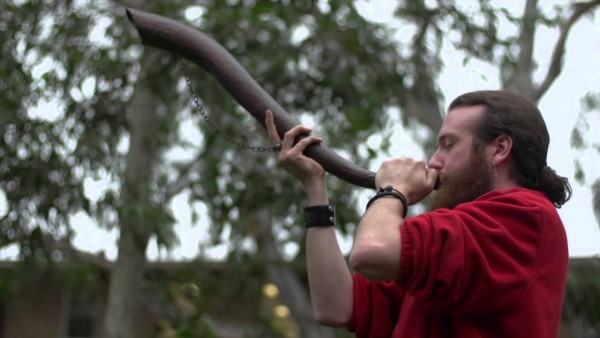3D Printing Breathes Life into Ancient Irish Horn

The true sound of this Iron Age Irish horn may have been lost for centuries. Courtesy of ANU.
Latest News
September 2, 2015
Additive manufacturing (AM) can complement almost any sort of research endeavor. As long as the research involves physical objects, bringing a 3D printer into the lab can help bring a project to completion. This idea has proven true for everything from dinosaurs to drug manufacturing.
Archaeology is one area in which the combination of 3D scanning, digital design, and 3D printing are able to combine to resurrect the visages of the long dead, or the shape of objects used millennia ago. Recently, archaeologist Billy Ó Foghlú from ANU College of Asia-Pacific was able to successfully reconstruct a musical instrument that had been silent since the Iron Ages.
 The true sound of this Iron Age Irish horn may have been lost for centuries. Courtesy of ANU.
The true sound of this Iron Age Irish horn may have been lost for centuries. Courtesy of ANU.Using measurements taken from what had previously been described as the Conical Spearbutt of Navan, Ó Foghlú created a mold using AM to build what he suspected was actually a mouthpiece. Ó Foghlú used similar modern technology to reconstruct an Iron Age horn and put the two together. According to Ó Foghlú, the musical results of the experiment prove the music of horns wasn’t lost to the ancient Irish as has long been thought.
While Iron Age horns have been found in Ireland, they’ve generally been considered instruments for hunting or war. Adding a mouthpiece to the horns increases the complexity of the instrument, and changes the sound of its voice.
“Suddenly the instrument came to life,” said Ó Foghlú. “These horns were not just hunting horns or noisemakers. They were very carefully constructed and repaired, they were played for hours. Music clearly had a very significant role in the culture.”
One possible explanation for the lack of ancient mouthpieces in Ireland may have to do with the culture’s burial rites. Horns may have been considered so personal an instrument that they were ritually dismantled and buried alongside their owners.
“A number of instruments have been found buried in bogs. The ritual killing of an instrument and depositing it in a burial site shows the full significance of it in the culture,” said Ó Foghlú.
Below you can hear the sounds of an Iron Age horn for yourself.
Source: ANU
Subscribe to our FREE magazine, FREE email newsletters or both!
Latest News
About the Author
John NewmanJohn Newman is a Digital Engineering contributor who focuses on 3D printing. Contact him via [email protected] and read his posts on Rapid Ready Technology.
Follow DE





